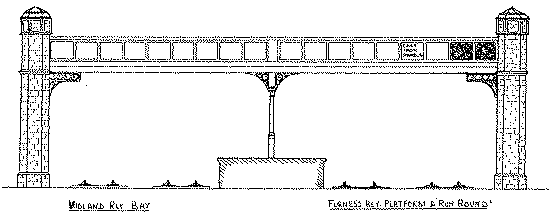Carnforth station W.Hardin Osborne remembers
IN the pre-grouping days Carnforth was one of the most interesting stations in the north- west serving as a terminus for the Furness main line and the Midland & Furness joint line to Skipton on the Settle-Carlisle line via Wennington, while the L.N.W.R. main line from Euston to Carlisle passed through the station. All three companies had locomotive sheds at Carnforth which was originally a small wayside station on the Lancaster- Carlisle Rly. It was considerably enlarged when the Ulverston-Lancaster Rly. was formed in 1857, which was later taken over by the Furness Rly. and became the connection via the L.N.W.R. with the south. The Furness & Midland Joint Rly. was opened in 1867 and although a joint line this was worked by Midland locomotives (apart from permanent- way maintenance trains which used Furness locomotives). The distance to London was 236 miles via L.N.W.R. to Euston and 260 miles via the Midland through Skipton to St. Pancras. There was a large passenger traffic to the Lake District in the summer where the Furness locomotives took over, doing so at the East Junction (where the Midland depot was situated) to save time.
The L.N.W.R. main-line platforms had canopies but the Furness & Midland platforms were entirely covered over. The Midland (who were really tenants of the Furness) used a 2-road bay while the Furness used a very long platform for both arrival and departure trains. A through line without a platform and under cover was used as a run-round and through goods line. In the 1930's the L.M.S.R. removed the all-over roof and built a new platform on the side of the through line giving the Furness section separate arrival and departure platforms. The Furness had running powers beyond Carnforth over the L.N.W.R. to Lancaster and Morecambe which were not frequently used. The Furness & Midland part of the station was in the Furness style of architecture and colours (buff and maroon), the roof supported by a large number of cast- iron stanchions as used at other stations. There were also decorated cast-iron panels at the two ends (for a model these could be made from perforated or wire gauze, or cut from the "lace-work" of discarded plastic table doilies). There was a large exchange of goods traffic but the main Furness mineral traffic used the line from Hindcaster nr. Oxenholme which connected with the Barrow line at Arnside, 7 miles from Carnforth. Article from "Railway Modeller", March 1967 reproduced by kind permission of Peco Publications.
|



